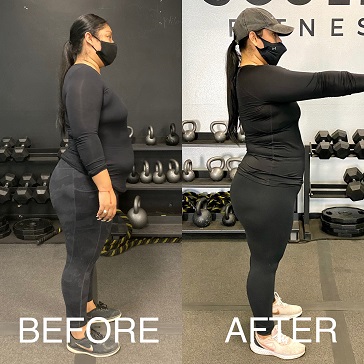The Science of Weight Loss: Understanding How Your Body Burns Fat

Losing weight can be a challenging journey, but it all boils down to one thing: burning fat. Understanding how your body burns fat can help you make informed decisions when it comes to your weight loss journey.
Here’s a breakdown of the science behind weight loss and how your body burns fat.
Table of Contents
The Basics of Weight Loss
When you consume more calories than your body needs, the excess calories are stored as fat. To lose weight, you need to create a calorie deficit by consuming fewer calories than you burn. This can be achieved through diet and exercise, which help you burn more calories than you consume.
But how does your body burn fat exactly?
When your body needs energy, it first uses the glucose stored in your bloodstream and liver. Once those glucose stores are depleted, your body turns to its fat stores for energy. This process is called lipolysis.
The Science of Lipolysis
Lipolysis is the process of breaking down stored fat into free fatty acids and glycerol. These fatty acids are then transported to the liver, where they are converted into energy through a process called beta-oxidation.
This energy is used to fuel your body’s functions, including physical activity and basic bodily functions like breathing and circulation. The more energy your body needs, the more fat is burned.
The Role of Hormones in Fat Burning
Several hormones play a role in the fat burning process. One of the most important is insulin. When you eat, your body releases insulin to help transport glucose into your cells for energy. Insulin also promotes the storage of fat.
On the other hand, the hormone glucagon promotes the breakdown of fat stores for energy. When insulin levels are low, glucagon levels are high, and your body starts to burn fat for energy.
Another hormone that plays a role in fat burning is leptin. Leptin is produced by fat cells and helps regulate appetite and metabolism. When you lose weight, your leptin levels decrease, which can make it harder to continue losing weight.
Maximizing Fat Burning Through Diet and Exercise
While understanding the science behind fat burning is important, it’s also crucial to know how to maximize fat burning through diet and exercise.
When it comes to diet, focusing on whole, nutrient-dense foods can help keep you feeling full and satisfied while consuming fewer calories. Incorporating healthy fats, protein, and fiber into your meals can also help promote fat burning.
Exercise is also key for burning fat. Cardiovascular exercise like running, biking, or swimming can help you burn calories and increase your body’s demand for energy. Strength training can also help build muscle, which increases your body’s overall energy needs and can promote fat burning.
Weight loss is all about burning fat. Understanding how your body burns fat through lipolysis, hormones, and energy demand can help you make informed decisions when it comes to your diet and exercise routine. By creating a calorie deficit and focusing on nutrient-dense foods and exercise, you can maximize fat burning and achieve your weight loss goals.
